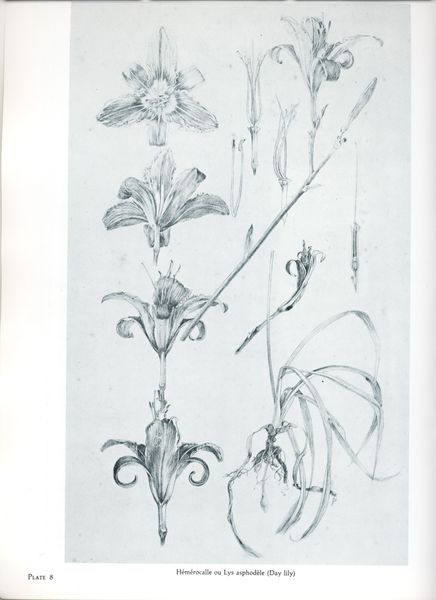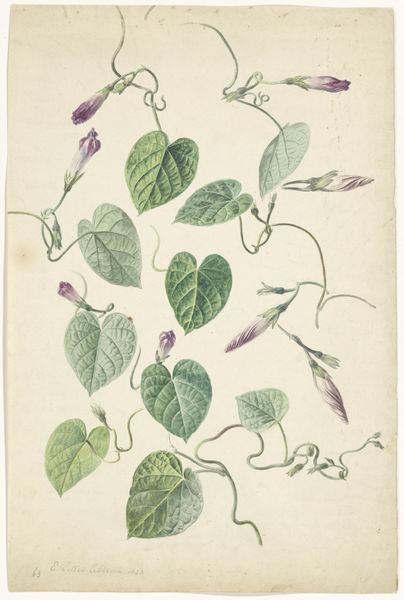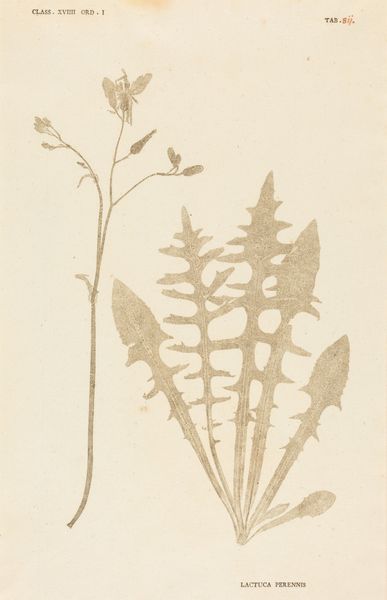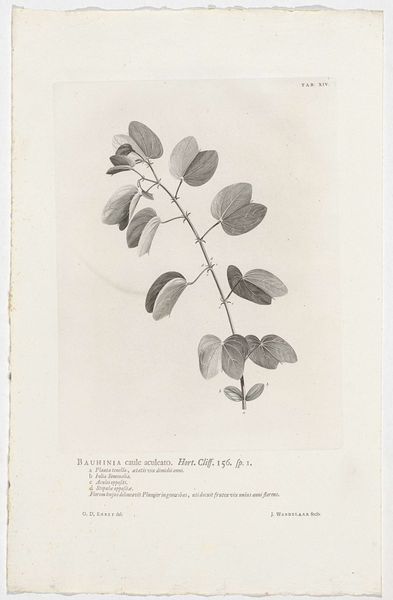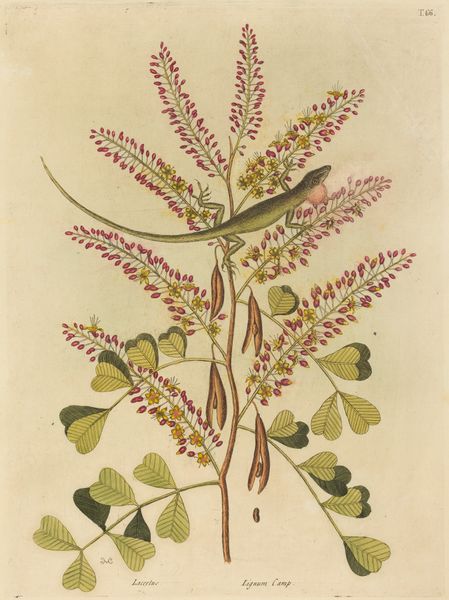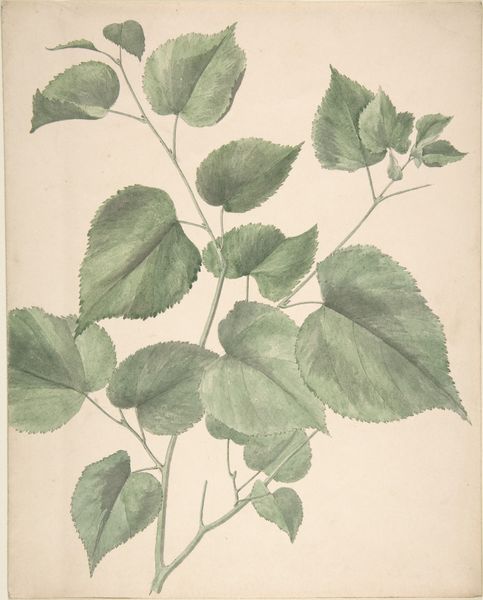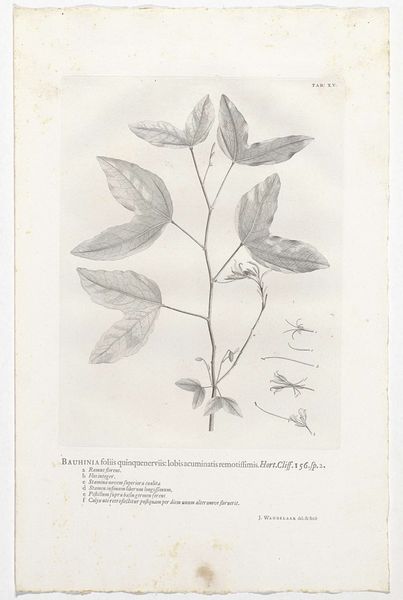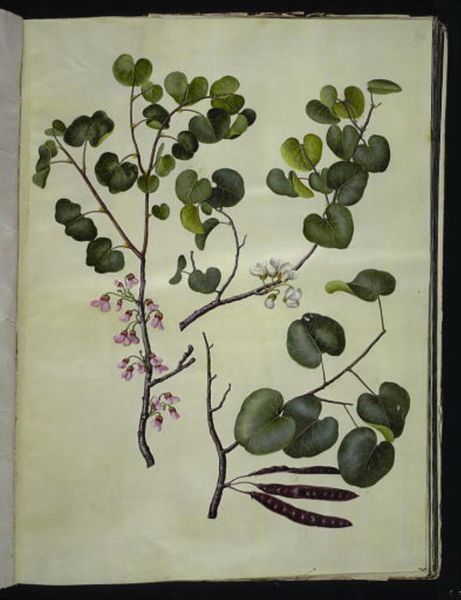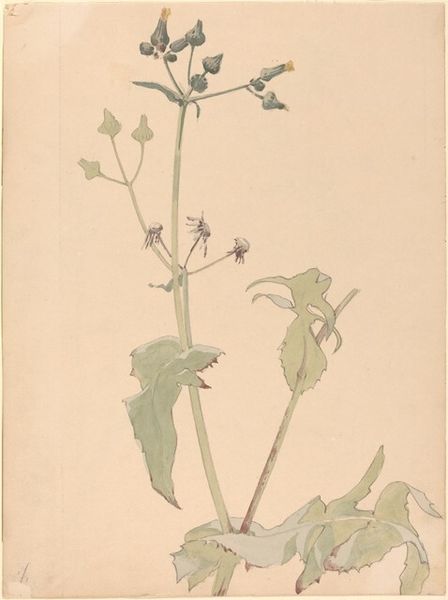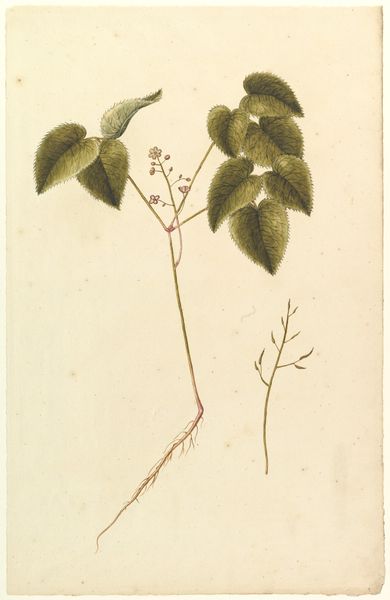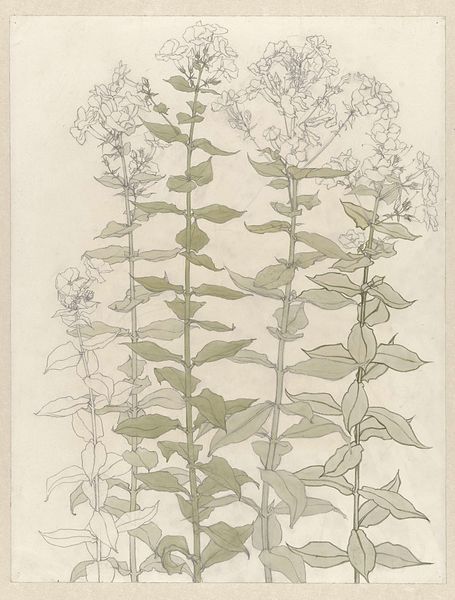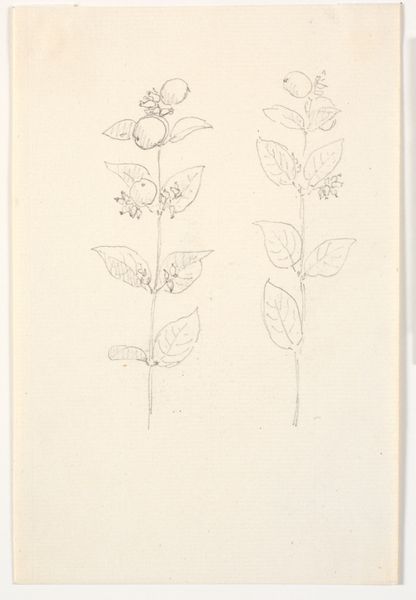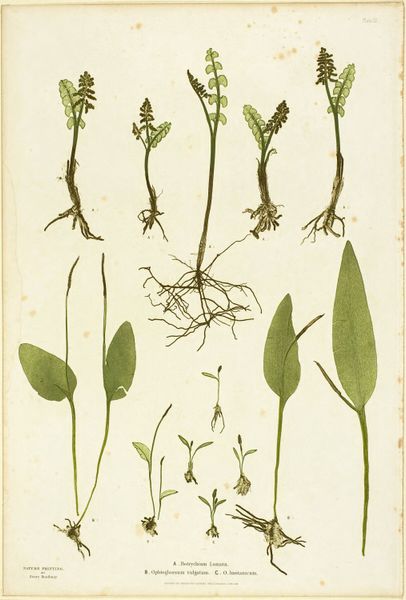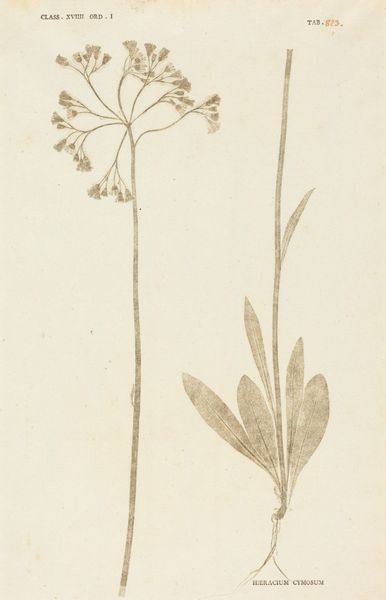
Copyright: Public Domain
Editor: We're looking at Odilon Redon's "Study of Plants," made around 1910. It's an ink drawing, and what strikes me is the contrast between the vividly rendered stem on the left, full of lush green leaves, and the sparser, more delicate renderings of plants on the right. How do you interpret this juxtaposition? Curator: Redon’s plant studies, viewed through a historical lens, reveal a shift in how botanical art functioned in the early 20th century. Think about the scientific precision usually associated with botanical illustration. Here, that precision feels…dissolved. What's replacing it, do you think? Editor: Maybe a more subjective, emotional engagement with nature? Curator: Precisely. Redon was part of a larger movement where artists began using nature less for scientific documentation and more as a springboard for expressing inner states. The Städel Museum, where this piece resides, actively collected such works. Does knowing it was acquired for public display change how you see it? Editor: Absolutely. It makes me consider the role museums played in validating this moreSymbolist approach to depicting the natural world. Instead of education alone, museums perhaps invited contemplation? Curator: Exactly! Museums helped transition art from the purely academic to realms of personal expression and imagination. Do you think works like this changed people's relationship to nature itself? Editor: Possibly, fostering a sense of wonder rather than purely scientific observation. This dialogue has illuminated Redon's work as both a Symbolist artwork and a product of specific historical circumstances. Thank you. Curator: It highlights how art reflects broader cultural shifts in perceiving nature. I've gained insight, too, appreciating how context deepens the artistic value.
Comments
No comments
Be the first to comment and join the conversation on the ultimate creative platform.
